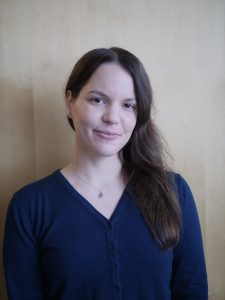Hila Behar: Plant Direct First Author

 Hila Behar, first author of “Populus endo-glucanase 16 localizes to the cell walls of developing tissues”
Hila Behar, first author of “Populus endo-glucanase 16 localizes to the cell walls of developing tissues”
Current Position: Co-founder at BryoSphere Biotechnologies
Education: B.Sc. Biology, Tel Aviv University (2011-2014); Ph.D. Biochemistry and Molecular Biology, University of British Columbia (2015-2021)
Non-scientific Interests: Reading, watching movies, hiking, playing Dungeons & Dragons
Brief bio:
I joined Prof. Harry Brumer’s lab at the University of British Columbia in 2015 for my Ph.D. During my degree, I studied the plant endo-glucanase 16 (EG16) enzymes which are carbohydrate-active enzymes that hydrolyze plant cell wall glucans mixed-linkage β-glucan and xyloglucan. I discovered that these unassuming enzymes are highly conserved throughout the plant kingdom and became determined to uncover their evolutionary importance and biological role.
My research showed that EG16 enzymes are primarily found in non-angiosperm plants like mosses, ferns, and conifers, and have conserved enzymatic activity across species that are vastly evolutionarily distant. Examining the biological function of EG16 in the moss, Physcomitrium (Physcomitrella) patens, I found that EG16 is mainly expressed in growing tissues and the EG16 gene products localize to the cell wall in these plants (despite their lack of signal peptide). In the present study, we show that both expression and localization patterns in the woody plant Populus EG16 are consistent with P. patens, but in contrast, the downregulation of EG16 did not produce clear growth phenotypes. This suggests that EG16 enzymes may serve a more important role in non-angiosperm plants, and we will need additional research to fully understand the biological function of angiosperm EG16s and how it compares to other plant species.
I am currently working as a co-founder of my own company where I combined my passion for finding solutions to address climate change and my love for moss. With this company, we aim to make valuable specialty phytochemicals using moss with a method that is environmentally friendly



